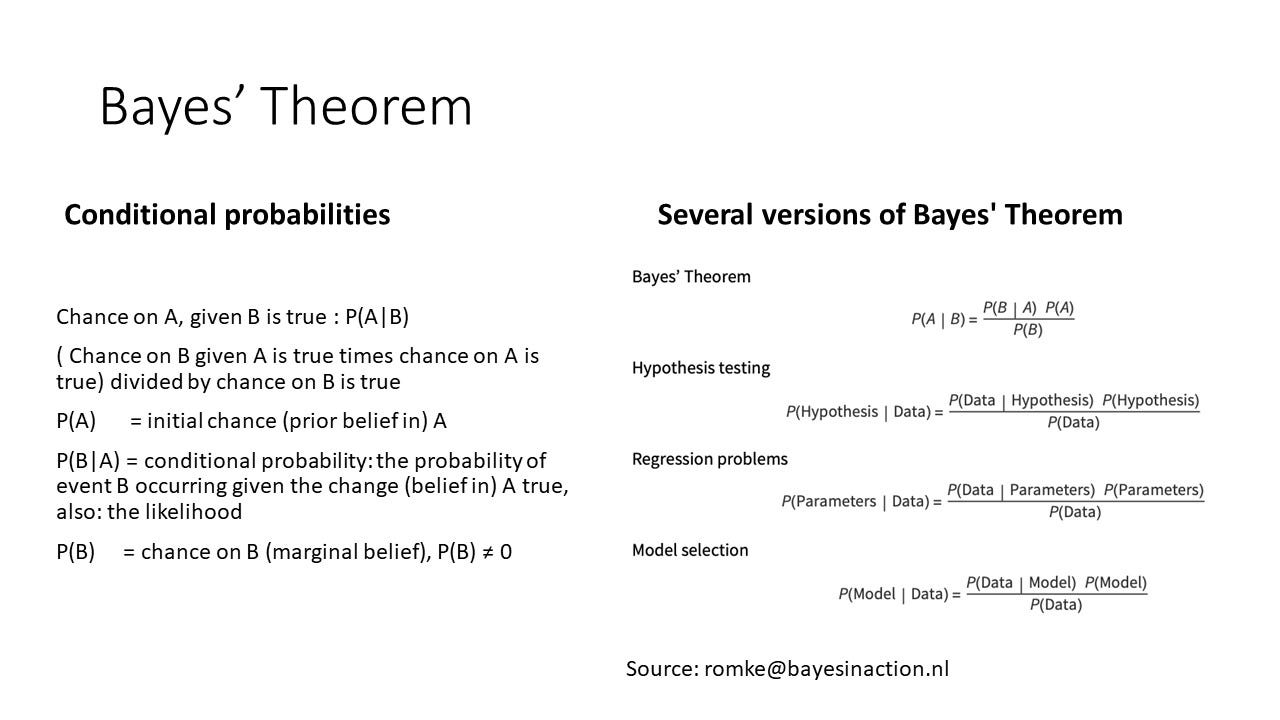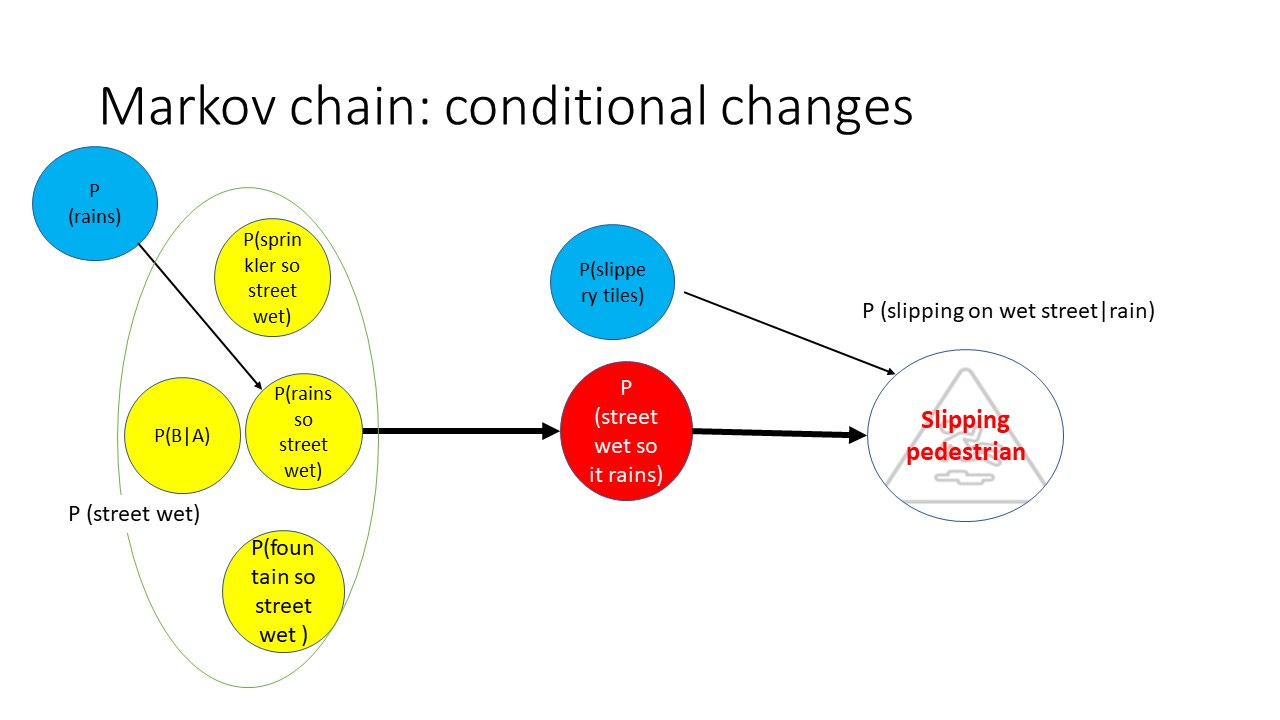This is not an idea
The beginning was communication
It started out as a response to Harish’s Notebook communication is miscommunication As I’ll explain, communication has its own dynamics.
Thanks again for writing about the paradox of communication. I once wrote a definition as of communication: "to talk as close as possible past each other". It's like Murphy's Law: "if we can misunderstand each other, we will; at the worst possible moment".
Language to communication is like hammering to carpentry. "Knock, knock" communicates too. Language is a tool, and stating we communicate through language is like saying carpentry is like hammering; hammering down a message.
We talk, using language, but words don't say anything. Human beings talk, the world communicates. That's what we have in common: the world, or the universe. We’re always communicating “forms”, through impressing and expressing.
We “read” forms of objects, and grasp their use. As you wrote, communication informs through form, shape. Their use forms the meaning, which I like to call metaphor-in-use. The meaning of a chair is in the sitting. Like a hammer informs us of hammering.
The use of an object is subjective. Using a chair – or a hammer – depends on you. You can even sit on a table or hammer with a screw driver. The words, like chair, hammer, I like to call metaphor-espoused. In translating one transforms use (meaning) into expression (words). The use of a chair doesn’t depends on the word – chair, Stuhl, chaise, stoel, ...- . Except when your mother is in the room.
As I’ll show next, every form or shape models, modelling both itself and its domains. The structure of a form accounts for its usefulness, like a map models a territory and maps a terrain into a territory. I’ve long wondered why Korzybski used the word “territory” and not “terrain”. I now understand that mapping territoryzes (not a spelling error) terrains.
Language has a grammar, a structure too. The basic structure of our language is “object verb subject: a direct or indirect object.” In this structure an object “subjects” its (direct) subject or the (indirect) subject is “subjected”. We can thus use language as a means of subjection. In Dutch the distinction is called “suffering object” and “cooperating object”.
Now the grammar of our languages induces a virtual territory of groups with subjects. “Every jargon is a conspiracy against the laymen” (Oscar Wilde) and through language one knows where to belong. We define – and therefor limit ourselves – through the structure of language.
The structure of the language-in-use structures our communications and induces the idea of hierarchy and control. This in turn tends to make us perceive reality as-if it’s structured this way. “See the cat? See the cradle?” (Kurt Vonnegut Jr).
(As it happens the Constructivist Foundations 19(2) features an article named by Andrey S. Druzhinin & Tzipora Rakedzon called “Why Language Kills: Semantic Patterns of (Self-)Destruction”)
---
I used to find this statement hard to understand: "a ship is a model of the sea". The shape of a ship fits its domain, its uses, what we call its purpose. A ship fits the conditions posed by conditions of the sea and our conditions. That's why we build them like we do. The ship is not a sea, but the structure accounts for its usefulness, to paraphrase Korzybski.
I can extend this metaphor to all models. Not only inanimate objects, but also animated organisms. We also have shape, a form that performs. We’re calling a fashion model a mannequin, which happens to be derived from the Dutch “mannetje”, or small man.
How does nature natures models? Last Friday I gave a presentation to members of the SCIO ,
https://www.systemspractice.org/
about conditional probabilities (Bayes), Markov chains and models. I like to use several meanings of “conditional”.
Bayes theorem can also be stated as: P(A|B) = probability of event or conditional status = likelihood P(B) times (probability of being true P(B|A) / probability of observing). The operative word here is “conditional”, which has a wonderful double meaning: conditions and conditioning. Chains of events, using Bayes, quickly stabilize in relatively stable configurations (systems), note the use of the word figure for form.
Slippery when wet. If the streets are wet, one may slip. It might be because of the rain. But perhaps also because somebody is spraying their garden, or the wind playing with a fountain, or they’re cleaning the pavement.... Now, who is responsible for your injuries, when you hurt yourself and there was no sign “slippery when wet”?
Any chain of events may lead to you falling on a wet floor. Looking backwards, it looks as-if events are causal, but looking forward, one has to apply the likelihood of different events. Did they intentionally leave out the sign? Didn’t I pay attention? One needs to update one's anticipations.
Chaining states, stating events. Now, you can imagine that, given enough time, generations of cycles of states, events, conditions, "using" the Bayes theorem, will produce “relatively stable, dynamical systems” and even "viable systems". One learns to be careful on wet pavement.
Speaking of events. States and/or events conditioning each other conditions. They “speak together”, the etymology of the word “condition”, another expression for communicating. Using our language we have to make a distinction, in reality they occur at the same time and place.
States/events can be modelled in so called Markov-chains, statuses in a chain of events. When (of if?) the conditions are met, the status will happen. My idea being that our body/brain estimates the changes of a useful event happening P(A|B) while reducing the change or likelihood of consequence of P(B) happening. One will be careful on wet floor, not because it’s wet, but because of the consequences of falling. Predicting a future, which is unlikely – one doesn’t like it - to happen.
Hiding under a blanket. Using Markov chains one can prove that self-sustaining, self-organizing ("autopoiesis") states exist under a so-called Markov-blanket. This is a kind of "bubble", a Markov-bubble, that both "depends" on external conditions and keeps internal conditions stable, relatively stable. An organism, in other words. One can perceive the shape or form of organisms, but cannot analyse their working without destroying it.
Belief in life. So, to reverse engineer evolution theory: if there’s a non-zero chance of conditions for life, life will find it and organize herself. However improbable. P(planet | life) = P(planet) * P(life | planet) / P (life). P(life) ≠ 0. Because of our object-subject use of language – an object cannot be a subject at the same time – this is difficult, but not hard to understand.
These systems are "operationally closed" ("independent") and "structurally coupled" ("depending") to their environment (although I prefer to use the word "domain"). Structures accounts for usefulness and use structures structure. Also, organisms organise internal “models” while modelling. These act as a kind of “memory”. Remember that a memory is an explanatory principle: one cannot find a location in a brain that remembers falling on a wet floor..
Mind the brain minding. The brain acts as a future predicting organ of the state of the body using internal models, modelling external conditions. It’s no use, to be consciously aware of this modelling. And the only way one can be aware of the implicit use of these models, is by recognizing others who seem to be using the same models. I tend to use the word “mind” for these models, as a mind minds.
While not anticipated, anticipation takes part of the organism. On retrospect, through the lenses of our language, it looks like cause and effect, organisms exist fit for purpose, perhaps even designed and created. Furthermore, because of the use of object-subject structured language, it is as-if these organisms are caused by causes, and adapt, while we cannot think they “predict” future conditions. The organism’s self understands without knowing.
--
What should we call "communication"? It's about interacting, communicative self developing (and enveloping 😊) . It also explains our use of the word "information" with "communication": shape informs shape of form shaping form. (I usually use the words informing and communicating, the verbs and not the nouns).
By extending the concept of communication, one can understand that living organisms organically organize themselves communicative. Their forms or shapes "fit" and condition the conditional conditions. And they also "inform" themselves by developing organs which model their model and their conditions. This a condition-sine-qua-non. An organism requires a (internal) model, manager, master(code) or mind capable of “predicting” external conditions.
Take a moment. Because our use of language, we tend to perceive time as divided, divided between past and future. We use time as-if it exists “in space”, for instance “time flies”. Time as a paradoxical concept is useful, and our way of structuring, past – now – future - accounts for its usefulness for us. Organisms – including our own body – don’t require a concept of time. Or, perhaps better formulated, have a different “concept” of time, durée. A body, an organism, is always in the here-and-now, in the moment.
Communities communicate. Furthermore, it makes sense to organize into communities of practice, practicing the same understanding. Paradoxically, these communities require diversification. And so develop and improve communication. This also may internally lead to stagnation and inabilities to deal with adverse conditions “caused” by the practice of communities themselves. And if there’s a non-zero probability it will happen, it will happen.
Communication communicates. Because we have been taught – educated – to think we communicate in language, we hardly notice communicating happens continuously. We speak about “non verbal communication”, as-if it is the exception. Not so. Moreover, this inability leads to a proliferation of talking, writing, typing, ... a.k.a. “communication” without meaning – it’s to say, without shape or form. Language has become an autonomous system, only interested in its own propagation. Language has become viral. We used to have language and now language has us. I’ve got AI to prove my point.
---
In our common way of using object-subject language, we introduce a double bind. Being subjected, a subject can hardly object against an object. You can see how authorities in states tends to suppress expressions against these authorities as coming from This is how paradoxes of expressing (authority, dependency, creativity and courage) act out in a dysfunctional way.
Language also is used to communicate meta-communication, structuring relationships. Belonging is expressed in language. Language, is being used for communication AND maintaining a community of people with a common language, while dividing communities with a common language,
When you believe we communicate in language, it's like every problem is a nail.




